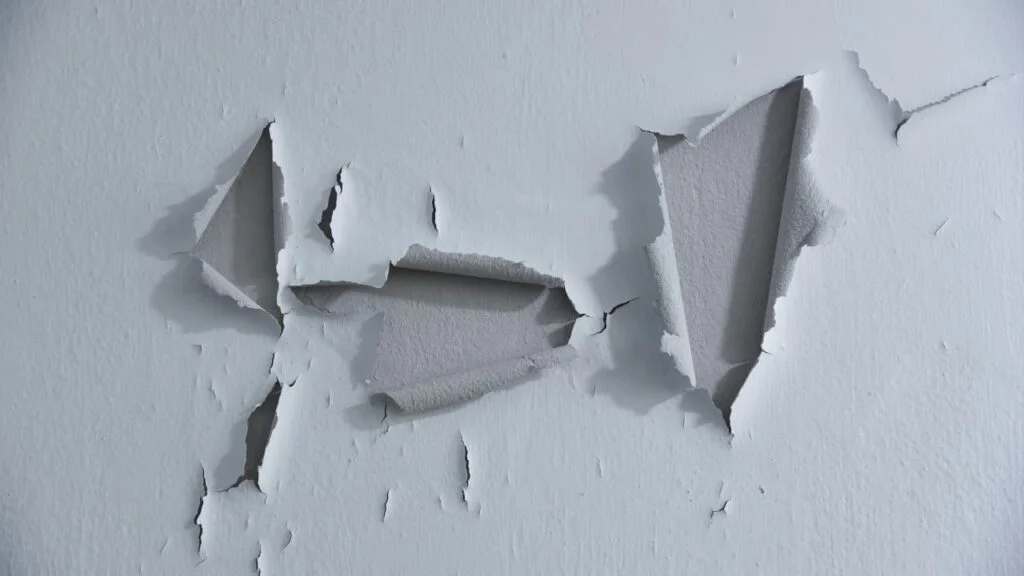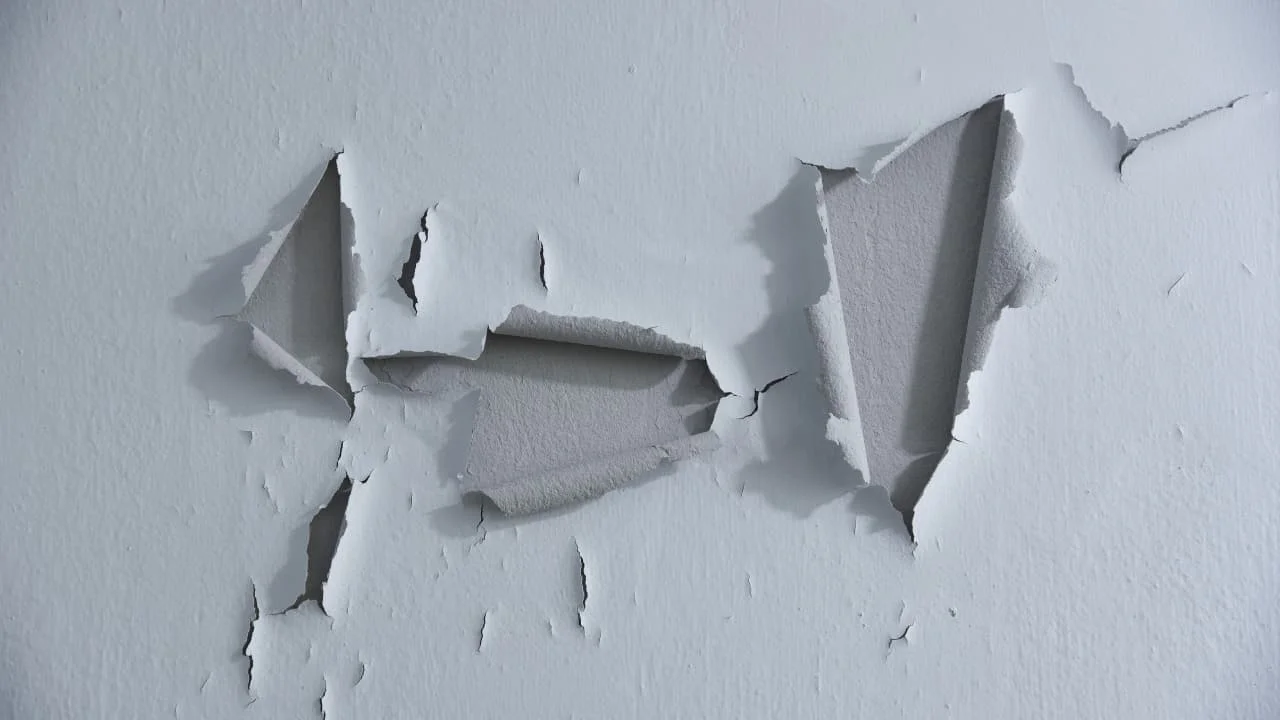Hey there! Have you ever noticed those unsightly cracks in your paint job? We definitely feel your frustration. Cracked paint can be such a headache to deal with, but fret not! In our article, we’re going to delve into the world of cracked paint and give you some helpful tips on how to fix and prevent it. So, if you’re tired of staring at those cracks on your walls or furniture, stay tuned because we’ve got you covered.
Wondering what causes paint to crack in the first place? Curious about the best methods for repairing cracked paint? We’ve got all the answers for you. From understanding the underlying causes to providing step-by-step instructions for a flawless paint repair job, our article is packed with valuable insights and practical advice.
So, whether you’re a DIY enthusiast or just looking to save some money on hiring professionals, we’re here to help you tackle those cracked paint woes and transform your space into perfection. Stay tuned for our upcoming article to learn more!
Understanding Cracked Paint
Maintaining the paint on your property is crucial for preserving its appearance and value. Cracked paint can be unsightly and may even lead to structural damage if left unattended. In this article, we will explore the causes of cracked paint, its effects, signs to look out for, and how to prevent and repair it. We will also provide tips on maintaining paint and choosing the right paint for your needs.


Table of Contents
Causes of Cracked Paint
Extreme Temperature Changes
One of the primary causes of cracked paint is extreme temperature changes. When paint is exposed to fluctuating temperatures, such as freezing cold followed by intense heat, it can expand and contract, causing the paint to crack. This is particularly common in areas with harsh winters or hot summers.
Moisture and Humidity
Moisture and humidity are also common culprits of cracked paint. When water finds its way into the walls or surfaces beneath the paint, it can cause the paint to bubble, peel, or crack. This is especially problematic in areas with high levels of humidity or where water can infiltrate, such as bathrooms, kitchens, or basements.
Low-Quality Paint
Using low-quality paint can also contribute to cracked paint. Inferior paints may not contain the necessary binders and additives to withstand environmental factors or adhere properly to surfaces. Investing in high-quality paint can help prevent cracking and ensure a longer-lasting finish.
Improper Surface Preparation
Failure to properly prepare the surface before painting can lead to cracked paint. Surfaces should be cleaned, sanded, and primed before applying paint. If the surface is not adequately prepared, the paint may not adhere properly, resulting in cracks or peeling.
Effects of Cracked Paint
Aesthetically Unsightly
Cracked paint is aesthetically unpleasing and can detract from the overall appearance of a property. Whether it’s interior or exterior paint, cracks and flakes can make a space look neglected and uncared for. This is particularly true for areas that are highly visible, such as the front facade of a house or a living room.
Decreases Property Value
In addition to the negative visual impact, cracked paint can also decrease the value of a property. Potential buyers or renters may view cracked paint as a sign of neglect or other maintenance issues. A property with well-maintained paint and no visible cracks or damage will inevitably command a higher price on the market.
Leads to Structural Damage
Cracked paint can also lead to structural damage if not addressed promptly. When moisture infiltrates through cracks in the paint, it can seep into the underlying surfaces, such as drywall or wood. This moisture can promote the growth of mold and mildew, and in severe cases, it can even cause material deterioration or rot. Over time, this can compromise the structural integrity of the property.
Signs of Cracked Paint
Visible Cracks or Flaking
The most obvious sign of cracked paint is visible cracks or flakes on the surface. These cracks can range in size from fine hairline cracks to larger, more noticeable ones. Flaking paint may also be present, where small or large pieces of paint detach from the surface.
Peeling Paint
Peeling paint is another sign of cracked paint. This occurs when the paint loses adhesion and starts to pull away from the surface, resulting in strips or patches of paint peeling off.
Bubbling or Blistering
Bubbling or blistering of paint is often a sign of moisture or trapped air beneath the paint film. This can lead to cracking or peeling as the water or air expands and contracts. Bubbles may appear as small raised areas or larger blisters.

Preventing Cracked Paint
Proper Surface Preparation
One of the best ways to prevent cracked paint is to ensure proper surface preparation. Before painting, surfaces should be cleaned thoroughly to remove dirt, dust, and grease. Sanding helps to create a smooth surface and improve paint adhesion. Applying a primer also helps seal the surface and provides a better base for the paint.
Using High-Quality Paint
Investing in high-quality paint is essential for preventing cracked paint. Quality paints have better binders and additives that help them adhere to the surface and withstand external forces, such as temperature changes and moisture. While they may cost more initially, the long-term benefits and durability make them a worthwhile investment.
Applying Primer
Using a primer before painting is crucial for preventing cracked paint. Primer helps seal the surface and provides better adhesion for the paint. It also helps to equalize the porosity of the surface, ensuring a uniform finish. Applying a primer is especially important when painting over surfaces that are porous or have existing paint issues.
Regular Maintenance
Regular maintenance is key to preventing cracked paint. This includes inspecting painted surfaces for any signs of cracks, flakes, or peeling and promptly addressing them. Regular cleaning can also help remove dirt, debris, and mildew, prolonging the life of the paint.
Repairing Cracked Paint
Scraping and Sanding
To repair cracked paint, start by scraping off any loose or peeling paint using a putty knife or scraper. Sand the area to create a smooth surface and remove any rough edges or additional loose paint. It’s important to wear protective equipment, such as goggles and a mask, to avoid breathing in dust or paint particles.
Applying Patching Compound
For small cracks or holes, apply a patching compound using a putty knife or a scraper. Smooth the compound over the crack, ensuring it is flush with the surrounding surface. Allow the compound to dry completely before moving on to the next step.
Priming the Surface
Once the patching compound is dry, apply a primer to the repaired area. The primer will help seal the patch and create a suitable base for the paint. Allow the primer to dry according to the manufacturer’s instructions before proceeding.
Repainting
After priming, it’s time to repaint the repaired area. Apply an even coat of paint using a brush or roller, ensuring proper coverage. Let the paint dry completely before applying a second coat, if necessary. It’s important to blend the new paint with the existing paint to achieve a seamless finish.
Tips for Maintaining Paint
Regular Cleaning
Regularly cleaning painted surfaces can help remove dirt, dust, and pollutants that can degrade paint over time. Use a mild detergent and a soft cloth or sponge to gently clean the surface. Avoid using abrasive cleaners or scrub brushes, as these can damage the paint.
Avoid Harsh Chemicals
When cleaning painted surfaces, avoid using harsh chemicals that can strip or degrade the paint. Opt for gentle, non-abrasive cleaners that are safe to use on painted surfaces. If you’re unsure, test the cleaner in an inconspicuous area first to ensure it doesn’t cause any damage.
Inspect for Cracks or Flaking
Regularly inspect painted surfaces for any signs of cracks, flakes, or peeling. Address these issues promptly to prevent further damage. Catching and repairing small cracks early can help avoid more extensive repairs in the future.
Touch-up Paint as Needed
Over time, paint may experience wear and tear, especially in high-traffic areas or exposed to the elements. When you notice small chips or areas of paint loss, touch up the paint using the same color and finish. This will help maintain a uniform appearance and prevent further deterioration.
Choosing the Right Paint
Consider the Surface Type
When choosing paint, consider the type of surface you will be painting. Different surfaces require different types of paint, such as latex for walls, enamel for trim, or epoxy for floors. The paint should be designed to adhere to the specific surface and withstand any environmental factors it may encounter.
Select the Proper Finish
The finish or sheen of the paint is also important to consider. Different finishes, such as flat, eggshell, satin, semi-gloss, or high-gloss, have varying levels of durability and reflectivity. For high-traffic areas or surfaces that are prone to moisture, a more durable and washable finish, such as semi-gloss or high-gloss, may be suitable.
Evaluate Paint Quality
Before purchasing paint, evaluate its quality. Look for reputable brands and read customer reviews to determine the performance and durability of the paint. Quality paints often have longer warranties and contain higher-quality ingredients that result in a more robust and long-lasting finish.
Professional Help for Cracked Paint
When to Seek Professional Assistance
While some paint repairs can be done as a DIY project, there may be instances where professional assistance is necessary. If the cracks are extensive, or if the underlying surfaces have significant damage, it’s best to consult a professional painting contractor. They have the expertise and tools to diagnose and address the issues properly.
Choosing a Reliable Painting Contractor
When selecting a painting contractor, it’s important to choose a reliable and experienced professional. Ask for recommendations from friends or family, and take the time to check their credentials, licenses, and insurance. Request samples or references of their previous work to ensure their quality meets your expectations.
Costs and Estimates
Before hiring a painting contractor, obtain multiple estimates to compare prices and services offered. The cost of repairing cracked paint will depend on factors such as the extent of the damage, the surface area to be repaired, and the quality of materials used. Request a detailed breakdown of the costs and a timeline for completion.
Longevity of Paint
Factors Affecting Paint Lifespan
Several factors can affect the lifespan of paint. Exposure to the elements, such as sunlight, rain, or extreme temperatures, can cause paint to fade, crack, or peel. Poor surface preparation, moisture or humidity, and using low-quality paint can also reduce the lifespan of paint.
Extending the Lifespan
To extend the lifespan of paint, it’s important to follow proper surface preparation techniques, use high-quality paint, and maintain the painted surfaces regularly. Additionally, protecting painted surfaces from excessive sunlight, moisture, or harsh weather conditions can help prolong the life of the paint.
Factors That May Require Repainting
Despite our best efforts, there may be times when repainting is necessary. Factors such as severe weather damage, structural repairs, or changes in design preferences may require repainting. Additionally, if the paint begins to crack or peel extensively, it’s essential to address the issue promptly to prevent further damage.
Conclusion
Maintaining paint is crucial for preserving the appearance and value of a property. By understanding the causes of cracked paint, taking preventive measures, and addressing issues promptly, you can ensure the longevity of your paint job and enjoy a visually pleasing living environment.
Regular inspections, proper surface preparation, using high-quality paint, and regular maintenance will help keep your paint looking fresh and beautiful for years to come. Remember, investing time and effort into maintaining your paint will pay off in the long run, enhancing both the aesthetics and value of your property.


